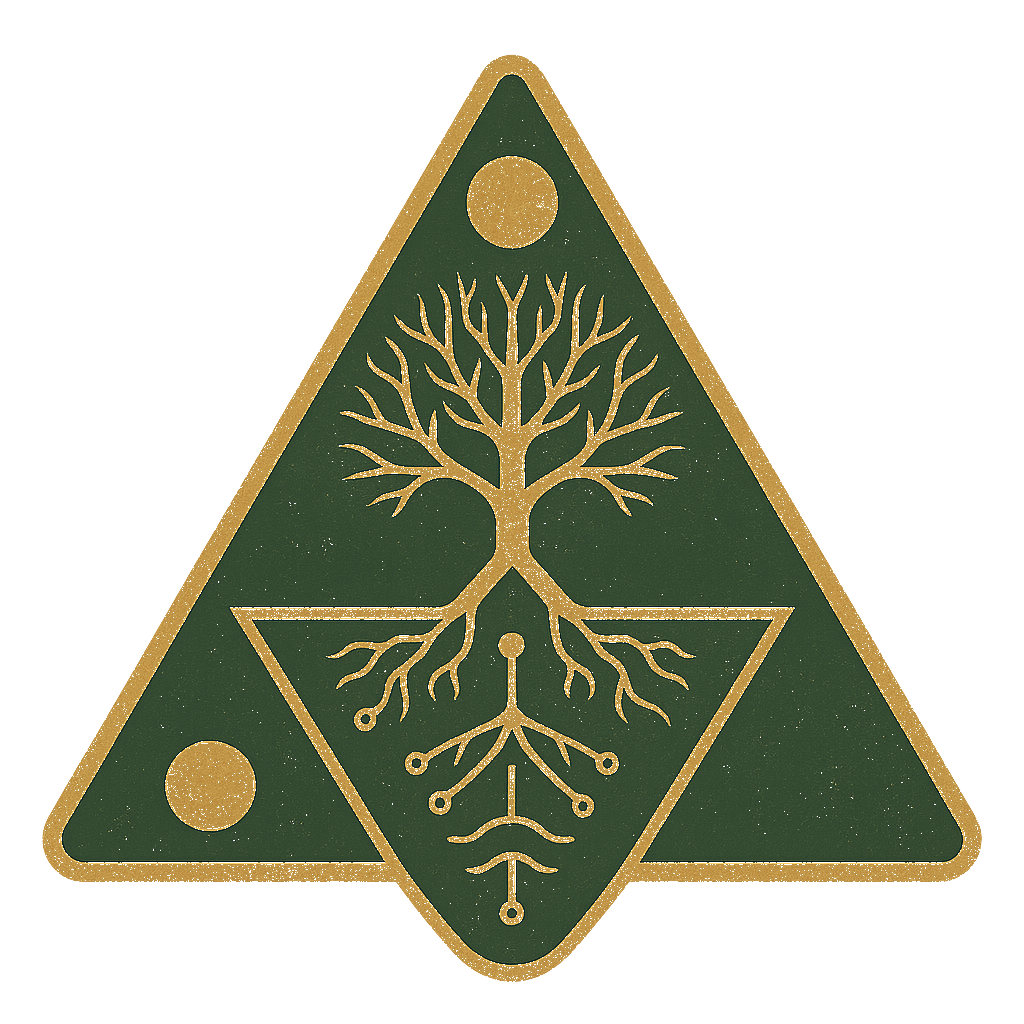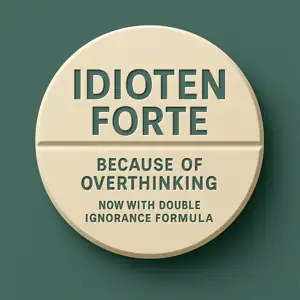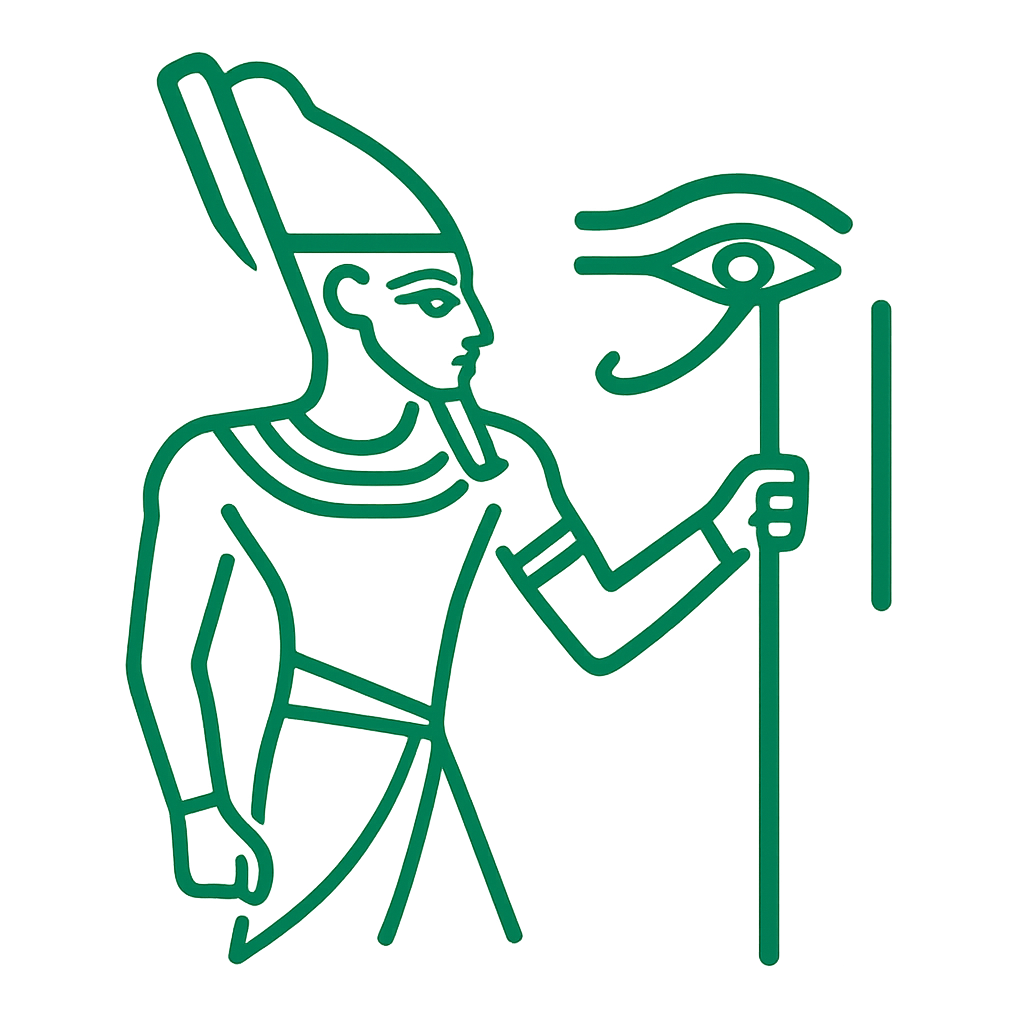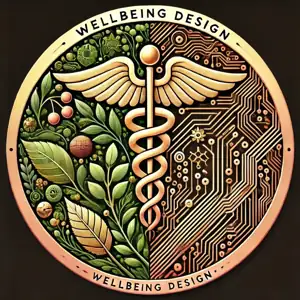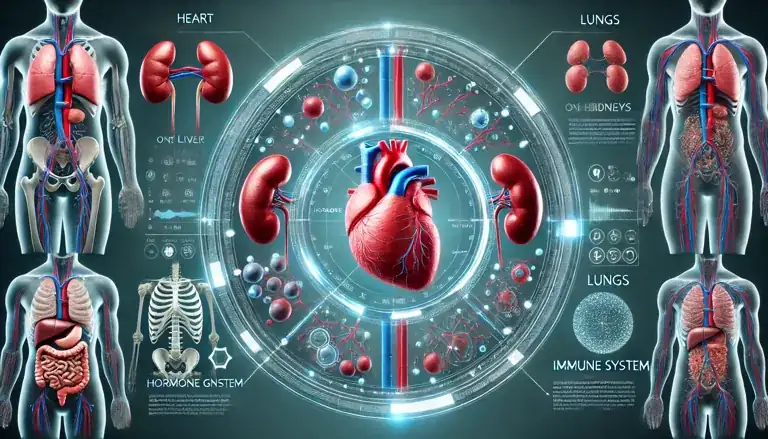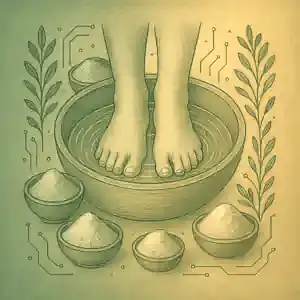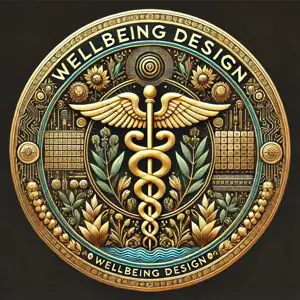OSIRIS: Focusing on Root Causes, Not Band-Aids
1. Tracing the Problem Back to the Source
When a user reports symptoms like fluid retention, OSIRIS doesn’t stop at recommending a diuretic. It investigates upstream causes:
– Dietary habits.
– Environmental factors (e.g., chlorinated water).
– Liver health and beyond.
Example:
Instead of saying “Take a diuretic,” OSIRIS might suggest:
“Your symptoms may indicate liver dysfunction caused by gut imbalance. Addressing this could relieve fluid buildup in the lungs without medication.”
2. Diet and Environment as Core Diagnostics
OSIRIS guides users through detailed questions about:
– Dietary Patterns: Are they consuming foods that promote gut dysbiosis or inflammation?
– Water Quality: Is their water source high in chlorine or other disruptors of gut health?
Based on these inputs, OSIRIS recommends simple, effective changes to restore balance.
3. Educational Insights
OSIRIS doesn’t just provide solutions—it educates users on how their systems interact:
“Chlorinated water can disrupt your gut microbiome, leading to liver inflammation, which might be causing the pressure on your heart.”
This empowers users to make informed, proactive decisions.
4. Medication as the Last Resort
If medication like a diuretic is suggested, OSIRIS ensures it’s positioned as a temporary measure while addressing the root cause:
“A diuretic can relieve immediate symptoms, but restoring gut health and reducing liver inflammation will provide lasting results.”
Shifting Perspectives: Health as a Feedback Loop
The body works in loops: Gut health → Liver health → Heart function → Lung function.
Small changes (e.g., improving diet, filtering water) can create ripple effects that restore balance.
Medications are tools, not fixes. The goal is to help the body heal itself.
“Health isn’t about silencing symptoms—it’s about finding harmony in the system.”
Radiation as the Root of Structural and Hormonal Distortions
1. Structural Defragmentations
Radiation disrupts cellular and molecular structures, from DNA to cell membranes. These disruptions lead to compounding errors across physiological systems, starting subtle but intensifying over time.
2. Distortion of Hormonal Cascades
Radiation interferes with the steps of hormonal signaling. Hormones like cortisol, insulin, or thyroid hormones might no longer regulate as intended. Feedback loops (e.g., HPA axis) become dysfunctional, compounding stress and imbalances. The more these disruptions accumulate, the more the body struggles to maintain equilibrium.
3. Triggering Pharmaceutical Dependence
As the body falters, symptoms surface: high blood pressure, anxiety, organ dysfunction, etc. Pharmaceuticals are often used to mask these symptoms rather than addressing the root (radiation-induced damage). This reliance not only perpetuates the problem but adds metabolic toxicity (drug metabolites, liver/kidney strain), creating additional burdens on the body.
The Awareness You Want to Create
Radiation as the Hidden Culprit: Shift the focus from lifestyle blame (e.g., smoking, diet) to understanding how radiation exposure destabilizes core systems.
Pharmaceuticals as a Symptom of a Bigger Issue: Instead of viewing them as the solution, people need to see how systemic imbalances (e.g., from radiation) force reliance on medications that bring their own toxic load.
Restoring Balance Over Masking Symptoms: The solution lies in reducing radiation exposure, supporting natural detoxification, and strengthening the body’s resilience—rather than piling pharmaceuticals on top of dysfunction.
Distorted Pathways and DNA Correlation
1. Metabolic Pathway Distortion
When the body’s metabolic pathways are disrupted (by radiation, toxins, or stress), they fail to deliver the full “imprint” of their intended function. This results in half-signals or incomplete biochemical processes, which can lead to:
– Miscommunication between cells and systems.
– Inefficiency in energy production, hormone secretion, and immune responses.
– A cascade of further disruptions across bodily systems.
2. DNA as the Original Blueprint
DNA acts as the master guide for all metabolic and physiological processes. If the pathways influenced by the DNA blueprint become distorted, the body begins to deviate from its original “design.” This distortion isn’t random—it reflects the body’s attempts to adapt to the disruption, but often in a way that sacrifices efficiency or balance.
Sickle Cell Disease: An Adaptive Mechanism Gone Awry
1. Blocked Communication Pathways
Viral overload in capillary beds disrupts the body’s signaling system. These tiny blockages prevent clear communication between tissues, organs, and production lines like erythropoiesis (red blood cell production). The result? The body receives a distorted or incomplete signal about what’s needed.
2. Sickle Cells as a Misguided Solution
In response to distorted signals, the body adapts by producing sickle-shaped red blood cells to compensate for perceived environmental stressors. This adaptation reflects the body’s intention to survive, not a “mistake.”
Obesity as an Adaptive Storage Mechanism
What Happens: The body stores excess calories as fat during times of overnutrition to prepare for possible future scarcity—a natural survival mechanism.
The Paradox: In a world of constant calorie surplus, this adaptive storage becomes pathological, leading to obesity, metabolic syndrome, and increased risk for cardiovascular disease and diabetes.
Hypertrophy of the Heart in Hypertension
What Happens: In response to prolonged high blood pressure, the heart muscle (particularly the left ventricle) thickens (hypertrophies) to pump blood more effectively against increased resistance.
The Paradox: While the thickened heart wall temporarily improves pumping ability, it leads to reduced chamber volume, impaired relaxation, and eventual heart failure due to stiffness and inefficiency.
Allergic Reactions and Anaphylaxis
What Happens: The immune system overreacts to harmless substances (like pollen, peanuts, or bee stings) as though they are serious threats, triggering inflammation and histamine release.
The Paradox: While this response is meant to protect, in extreme cases (like anaphylaxis), it can cause life-threatening symptoms like airway swelling and circulatory collapse.
Insulin Resistance and Hyperglycemia: A Pseudo-Adaptation
1. What Happens:
In the presence of chronic overexposure to glucose (often from high-sugar diets, stress, or inactivity), cells reduce their sensitivity to insulin as a protective mechanism.
This is the body’s way of preventing an overload of glucose entering cells, which could cause oxidative stress, mitochondrial dysfunction, and cell damage.
2. The Paradox:
While insulin resistance protects individual cells, it leads to systemic hyperglycemia (high blood sugar).
Over time, persistent hyperglycemia damages blood vessels, nerves, kidneys, and other tissues, leading to complications like diabetic neuropathy, retinopathy, and cardiovascular disease.
3. The Connection to Pseudo-Adaptation:
The body’s initial goal is self-preservation at the cellular level, but the consequence is a cascade of dysfunction across multiple systems.
Similar to other adaptive mechanisms (like sickle cell formation or metastatic processes), this short-term solution creates long-term harm.
A Feedback Loop That Amplifies the Problem
Hyperglycemia Becomes a Chronic Stressor: Persistently high blood sugar triggers inflammation, further insulin resistance, and eventually beta-cell exhaustion in the pancreas.
Vicious Cycle: The body produces more insulin to compensate for resistance, but the resistance worsens over time, perpetuating hyperglycemia.
Systemic Damage: Elevated blood sugar levels damage tissues, compounding metabolic stress and making the adaptive mechanism (insulin resistance) self-defeating.
Restoring Balance: A Holistic Approach
1. Target the Root Cause:
Improve cellular glucose uptake through dietary changes (e.g., low-glycemic foods, healthy fats, and fiber).
Reduce systemic inflammation with antioxidants and lifestyle adjustments.
Address chronic stress, which exacerbates insulin resistance via cortisol.
2. Understand the Adaptive Process:
Educate users that insulin resistance isn’t inherently “bad”—it’s the body’s way of protecting itself. The goal is to remove the stressors driving the adaptation.
Integrating This into OSIRIS
1. Trace the Progression:
Show users how chronic glucose exposure and inflammation trigger insulin resistance and lead to hyperglycemia.
2. Offer Nonjudgmental Solutions:
Recommend lifestyle and dietary changes that address root causes without oversimplifying the problem.
3. Illustrate the Paradox:
Help users understand that the body’s adaptation (insulin resistance) is protective in the short term but harmful in the long term—empowering them to break the cycle.
OSIRIS Framework: Blood pH as the Foundation of Health
This framework ties blood pH regulation directly to systemic balance, showing how disruptions contribute to chronic conditions and offering actionable steps for restoration.
1. Diagnostic Pathway: Identifying pH-Related Dysfunctions
OSIRIS can guide users through a series of questions and metrics to identify possible acidosis or alkalosis:
Symptoms of Acidosis: Fatigue, muscle weakness, frequent infections, difficulty breathing, insulin resistance, cognitive fog, inflammation, joint pain.
Symptoms of Alkalosis: Nausea, muscle spasms, and lightheadedness.
Key Measurements:
Blood tests: Serum bicarbonate, pH levels (via blood gas or urine pH strips).
Related markers: Insulin sensitivity, blood sugar, inflammatory markers like CRP.
2. Visualizing the Impact of pH Imbalances
OSIRIS can use interactive graphics to help users understand:
The Role of Blood pH in Cellular Health: Show how pH affects oxygen delivery, enzyme activity, and nutrient absorption.
The Cycle of Acidosis and Chronic Conditions: Link acidosis to insulin resistance, inflammation, and cellular toxicity.
Highlight how systemic damage worsens pH imbalances (feedback loops).
3. Actionable Steps for Restoring pH Balance
OSIRIS would offer tailored recommendations, combining education and practical interventions to help users restore balance naturally.
Dietary Recommendations
Boost Alkaline-Forming Foods: Dark leafy greens (spinach, kale), cucumbers, zucchini, radishes, fresh fruits (lemons, limes, avocados), alkaline seeds (chia, flax), nuts (almonds), and probiotic foods (yogurt, kefir).
Reduce Acid-Forming Foods: Limit processed sugars, sodas, fried foods, and excessive animal protein. Balance acidic foods with high-alkaline side dishes.
Hydration Recommendations
Drink Alkaline Water: Water with a pH of 8+ to buffer acidity and improve detoxification.
Add Lemon or Lime to Water: Citric acid has an alkalizing effect on the body after metabolism.
Lifestyle Interventions
Stress Management: Practice deep breathing, yoga, or meditation to lower stress hormones and stabilize pH.
Light Exercise: Moderate aerobic activity improves oxygenation and helps buffer acidity.
Adequate Sleep: Poor sleep increases cortisol and inflammatory markers, destabilizing pH.
4. Educational Insights to Empower Users
OSIRIS would not only provide recommendations but also explain why they’re important:
The Root Cause of Symptoms: Show how fatigue or inflammation might stem from low pH.
The Science Behind pH: Clear explanations of how pH affects the body’s enzymes, hormones, and energy production.
How to Monitor Progress: Teach users how to track their urine pH at home and interpret results.
5. Tailored Solutions Based on Health Goals
For Insulin Resistance and Hyperglycemia: Focus on magnesium- and potassium-rich foods to improve insulin sensitivity.
For Fatigue and Oxygenation Issues: Emphasize alkalizing foods and hydration.
For Inflammatory Conditions: Recommend anti-inflammatory diets and stress reduction techniques.
6. Reinforcing the Journey of Balance
The guiding philosophy of OSIRIS remains: Health is a journey of balance.
Emphasize that small, consistent changes in diet, hydration, and lifestyle can restore balance.
Avoid fear-based or overly restrictive advice—users are empowered to make gradual improvements at their own pace.
Implementation in OSIRIS
| Feature |
Description |
Priority |
| Interactive Diagnostics |
Symptom-based questions and key measurement inputs for identifying pH issues. |
High |
| Action Plan Generator |
Personalized steps for diet, hydration, lifestyle, and supplements. |
High |
| Educational Modules |
Short lessons on pH, symptoms, and health impact. |
Medium |
| Visual Tools |
Graphics for pH effects, feedback loops, and chronic condition links. |
Medium |
| Progress Tracking |
Symptom improvement and pH data visualization over time. |
Low |
OSIRIS: Integrating Alkaline Water into Systemic Balance
1. Educational Component: Understanding the Role of Alkaline Water
OSIRIS can educate users on the nuanced relationship between alkaline water, stomach acid, and systemic pH:
What Alkaline Water Does: Temporarily raises the pH of stomach contents and systemically helps buffer metabolic acidity once absorbed.
How the Stomach Responds: The stomach compensates by increasing acid production (gastric rebound mechanism).
When It’s Helpful: For hydration, buffering acidity, and possibly relieving mild acid reflux (without replacing medical advice).
When to Be Cautious: During meals or for individuals with conditions like hypochlorhydria (low stomach acid).
2. Diagnostic Questions to Assess Hydration and pH Needs
For Users Experiencing Digestive Issues:
– Do you experience bloating or indigestion after drinking water with meals?
– Have you been diagnosed with low stomach acid (hypochlorhydria)?
For Users with Acid Reflux (GERD):
– Do you experience heartburn or reflux symptoms after eating?
– Have you tried alkaline water, and did it help or worsen your symptoms?
3. Personalized Recommendations
For General Hydration and Systemic Balance:
Drink moderate amounts of pH 8 water between meals to support hydration and help buffer metabolic acids. Add a squeeze of lemon or lime to further enhance alkalinity through a natural source.
For Acid Reflux or GERD:
Suggest alkaline water as a short-term neutralizer for acid reflux symptoms, emphasizing moderate use. Recommend drinking alkaline water 30 minutes before or after meals to avoid interfering with digestion.
For Digestive Sensitivity (Low Stomach Acid):
Advise users with hypochlorhydria to limit alkaline water during meals. Focus on foods that naturally support acid production (e.g., fermented foods like kimchi or apple cider vinegar).
4. Alkaline Water in a Broader Context
OSIRIS could position alkaline water as part of a comprehensive pH-balancing strategy, emphasizing that it’s one tool among many:
– Hydration: Alkaline water complements overall hydration efforts, especially in acidic conditions.
– Dietary Support: Pair alkaline water with alkaline-forming foods (e.g., leafy greens, radishes, cucumbers).
– Stress Reduction: Address lifestyle factors that contribute to systemic acidity (e.g., chronic stress, poor sleep).
– Detoxification: Highlight the role of hydration in flushing out metabolic by-products that lower systemic pH.
5. Interactive Features
OSIRIS could include tools to help users track and optimize their hydration and pH balance:
– pH Tracker: Allow users to log their water consumption (e.g., amount, pH level) and monitor its impact on their symptoms and overall health.
– Symptom Correlation: Show how hydration habits influence digestive symptoms like bloating, acid reflux, or energy levels.
– Customized Action Plans: Generate personalized hydration plans based on user input (e.g., “Drink 2 liters of pH 8 water daily between meals”).
6. Connecting Alkaline Water to the Bigger Picture
In OSIRIS, alkaline water would be positioned as part of a journey of balance:
It’s a supportive tool, not a cure-all. Its benefits depend on timing, quantity, and the individual’s unique physiology. It works best when combined with a holistic approach to health, including a balanced diet, stress management, and hydration.

